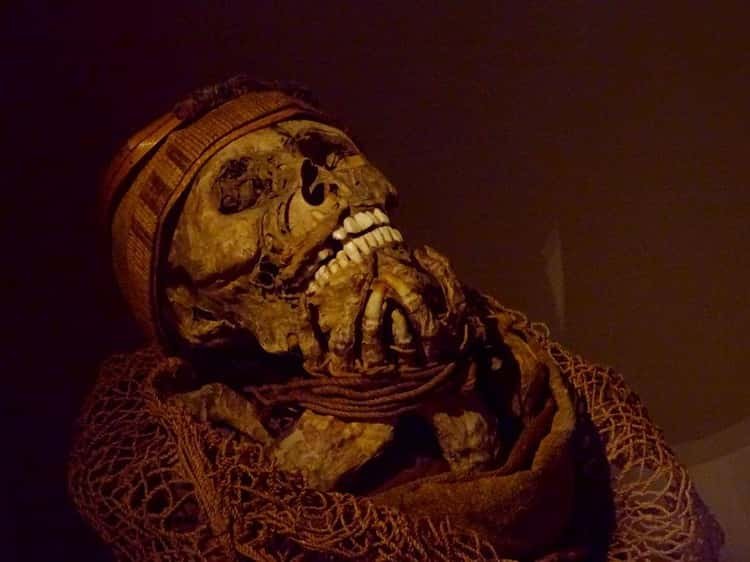
Credits Images: Wikwand.com
The legend of Eldorado, tells the story of the existence of a lost city in the middle of the dense Amazon forest. Up until this point this would be just another lost Inca city like so many others that were later found by adventurers. However, the narrative of the Indians to the Spaniards at the time of colonization spoke of a city full of gold in the city's buildings, temples, idol statues, armor and shield.
The city was originally called by the indigenous people of Manoa, and was built on the shores of a lake called "Parime" where rituals for the gods were performed, many believed that this lake is the current Lake Guatavita.
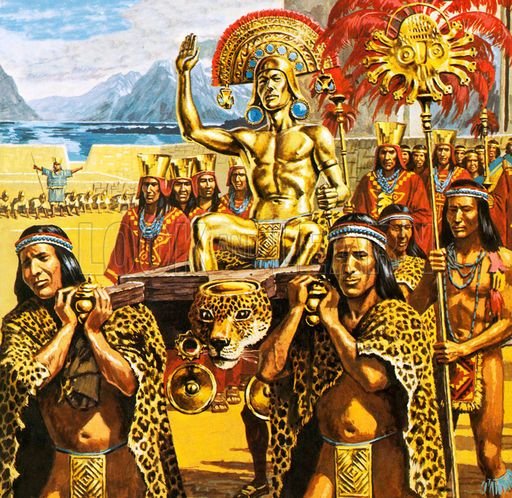
Credits Images: newhistorian.com
Guatavita Lagoon
The term Eldorado means The Golden (Man) in Spanish, according to archeologists and historians, Eldorado was not a city, but a human being! Such was the wealth of the citadel that the emperor was in the habit of wallowing in gold dust in order to obtain a golden skin.
There are several theories for the origin of the legend. The most told of all came in 1535, when General Sebastián de Belalcázar managed to destroy the last resistance of the Inca empire. At that moment the story gets confused, some say that after the conquest the general heard from an indigenous prisoner the story of Eldorado. Others say that shortly after the Spaniards conquered the Inca Empire, an Indian requested help from the Spaniards for his people's war against the Muiscas. To convince the Spaniards, he stated that in the land of the Muisca there was a lot of gold and emeralds and described the ceremony of the man covered in gold.
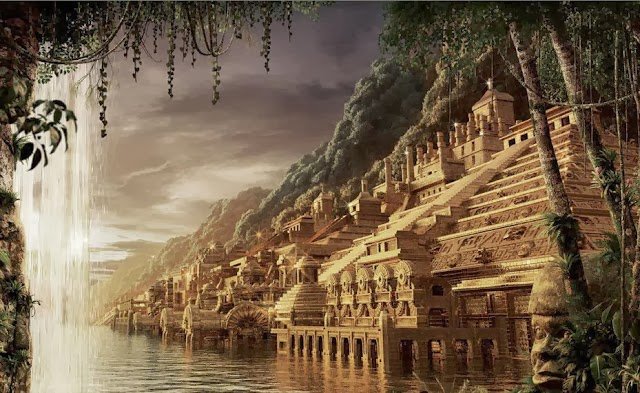
Credits Images: rarehistory.com
Sebastian de Belalcazar
Despite this mismatch of information, the two versions say that the said Indian or prisoner claimed that there was a very wealthy tribe, located near the current Santa Fé de Bogotá (capital of Colombia), where the Chibcha or Muisa Indians lived. The city was so abundant with gold that the king covered his whole body with gold dust, probably when he ascended the throne, or before warlike actions.
Completely golden, the king went to the middle of the Guatavita lagoon, in a boat, and bathed in the waters, after having thrown, to the bottom, jewels, various gold objects and precious stones, as offerings to his god. At night, he would bathe in a pond, removing all the gold from his body, so that the next day he would be covered with this precious metal again.
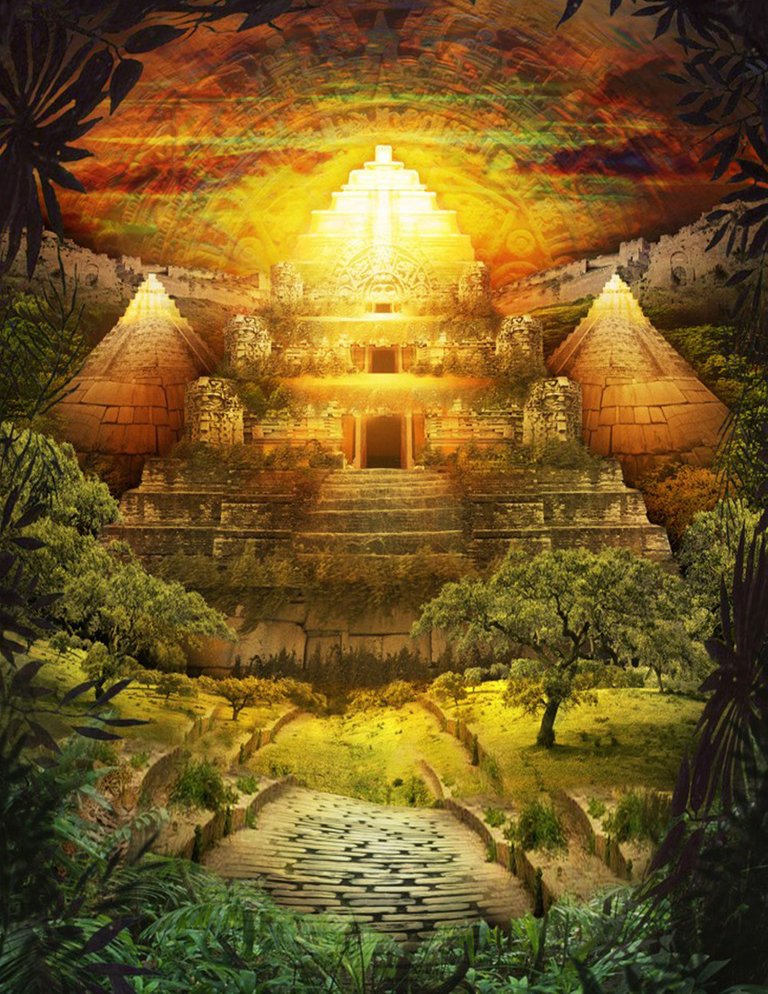
Credits Images: newhistorian.com
In 1636 Juan Rodríguez Freyle wrote the best-known version of the legend in the chronicle El Carnero.
“...In that lake of Guatavita they made a large raft of reeds, and decorated it until it was as showy as they could... At this point the entire lake was surrounded by Indians and lit up around its circumference, the Indians and Indian women all crowned. of gold, feathers and nose ornaments… They undressed the heir (...) and smeared him with a sticky alloy, and covered everything with powdered gold, so that he was all covered with that metal. They put him on the raft, on which he stood, and his feet placed a heap of gold and emeralds for him to offer to his god. He was accompanied on the boat by four chiefs, the most important, decked with feathers, crowns, bracelets, nose ornaments and golden ear-muffs, and also naked... The golden Indian made his offering by throwing all the gold and emeralds that he carried it to his feet, and then the chiefs who accompanied him followed suit. When the ceremony was over, the banners were waving... And leaving the raft for land, the shouting began... dancing in circles in their own way. With such a ceremony, the new chosen one for lord and prince was recognized”.
The story of the king who covered himself with gold gained strength when in the lagoon of Siecha near the Pyramid of the Sun, 35 kilometers from Guatavita, they found in 1856 a piece of gold weighing 262 grams, in the shape of a round raft measuring 9.5 cm in diameter, which appeared to represent it was found. Revealed to the world in 1883 by Liborio Zerda, in the book El Dorado, it was bought by a German museum, but it was lost when the ship carrying it caught fire in the port of Bremen.
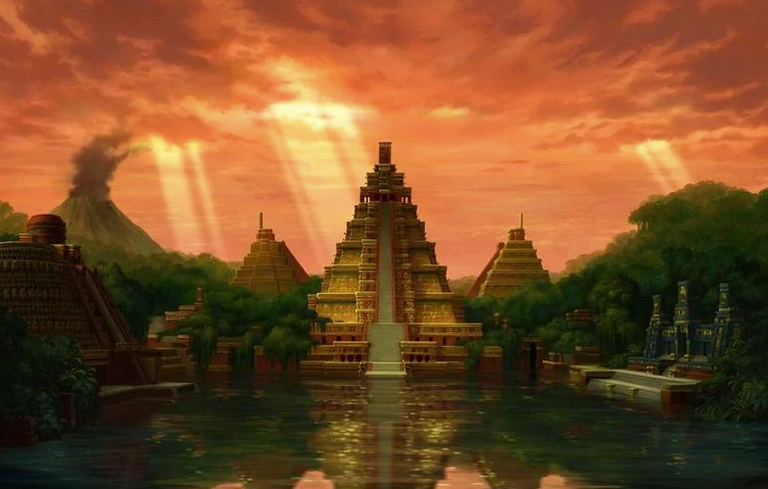
Credits Images: worldhistory.org
Gold raft found in Siecha
A second similar piece was found in 1969, by three peasants, inside a ceramic vase, in a small cave in the countryside of Pasca, Cundinamarca. Today the piece is in the Gold Museum of Bogotá, known as "Balsa de El Dorado", weighs 287.5 grams, is 19 cm long by 10 wide.
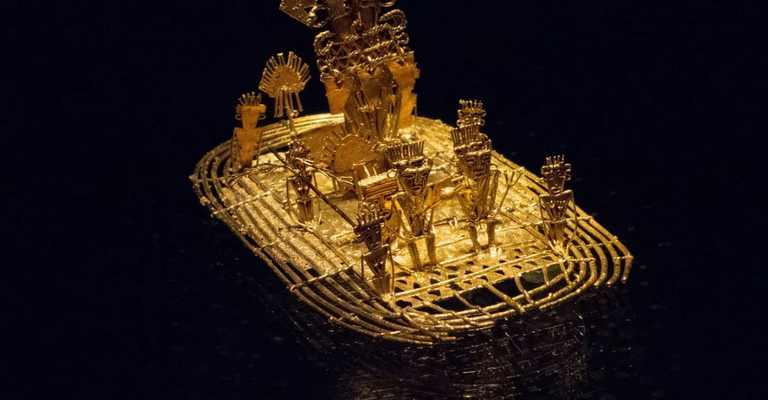
Credits Images: wikipedia.com
The El Dorado Ferry, at the Museum of
Gold of Bogotá (Muisca art, 1200-1500 AD)
Chroniclers report that as soon as General Sebastián de Belalcazar heard the story, he exclaimed "Let's go look for this golden Indian!" The myth of the Eldorado conquered the imagination of the conquerors of the 15th and 16th centuries to such an extent that it dragged Europeans along in search of treasure and the discovery of new American lands. Many explorers sought out the mythical city. However, organized expeditions, such as those of Pedro Fernandez de Lugo, Gonzalo Quesada, Gonçalo Pizarro, Pedro de Ursua, in various places in the North of South America, namely, along the Orinoco River, the Negro River, in the Guatavita Lake , proved difficult and unsuccessful.
With successive explorations, the location of the supposed Eldorado moved further and further east, in the territory of what is now Venezuela and later the current Brazilian state of Roraima and the Guianas. The Eldorado was believed to be in several regions of the New World: some said to be in what is now the Sonoran Desert in Mexico. Others believed to be in the region of the sources of the Amazon River, or even somewhere in Central America. The fact is that these are just some of the many assumptions about the possible location of Eldorado, fed during the colonization of the American continent.
Congratulations @don8bit! You have completed the following achievement on the Hive blockchain and have been rewarded with new badge(s):
Your next payout target is 250 HP.
The unit is Hive Power equivalent because post and comment rewards can be split into HP and HBD
You can view your badges on your board and compare yourself to others in the Ranking
If you no longer want to receive notifications, reply to this comment with the word
STOPTo support your work, I also upvoted your post!
Source of potential plagiarism
Direct translation without giving credit to the original author is Plagiarism. Repeated plagiarism is considered fraud. Fraud is discouraged by the community and may result in the account being Blacklisted.
Guide: Why and How People Abuse and Plagiarise
Please note that direct translations including attribution or source with no original content are considered spam.
If you believe this comment is in error, please contact us in #appeals in Discord.